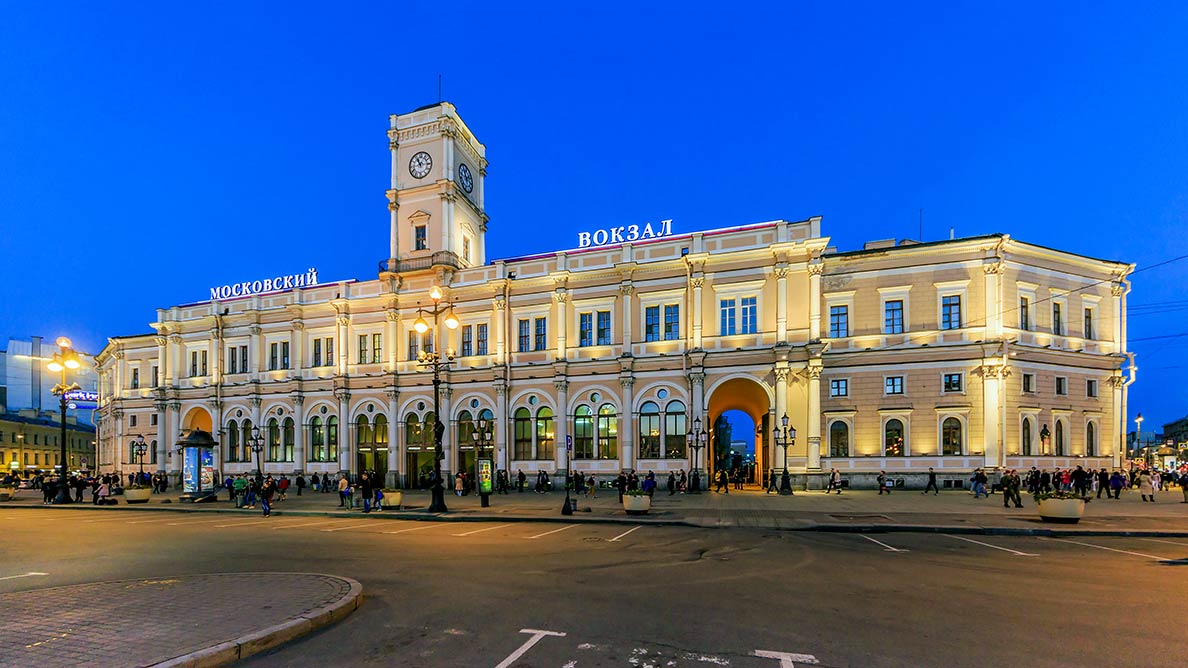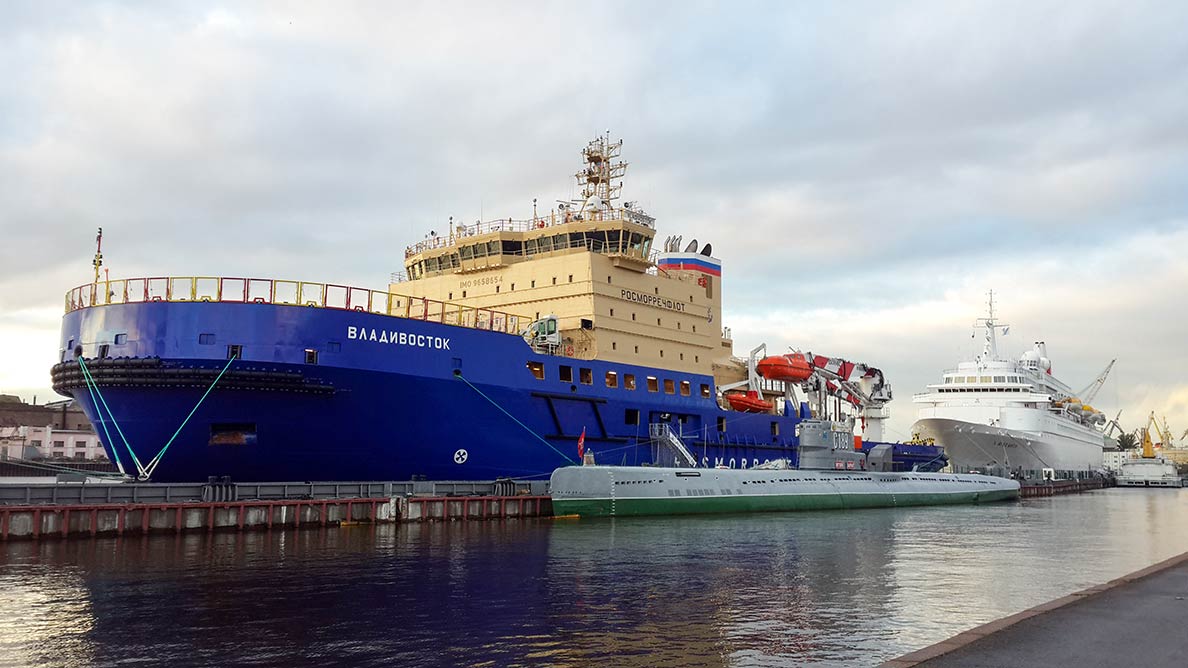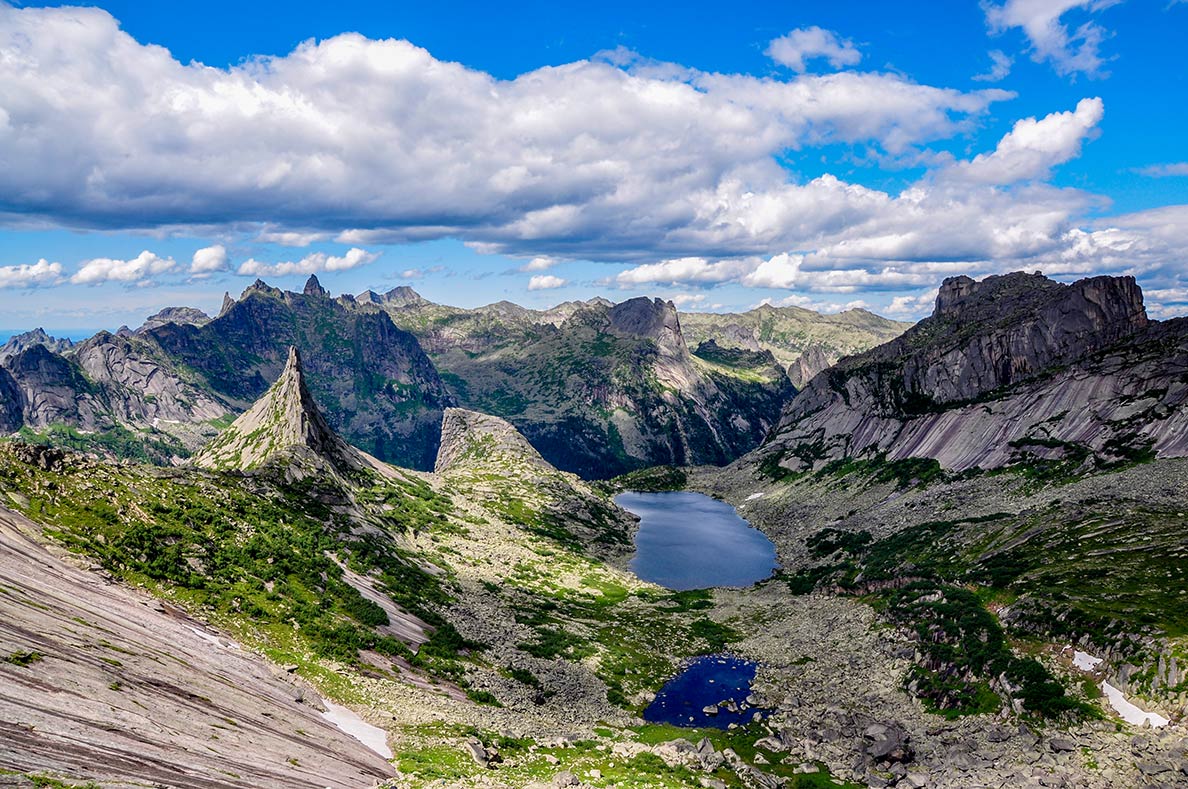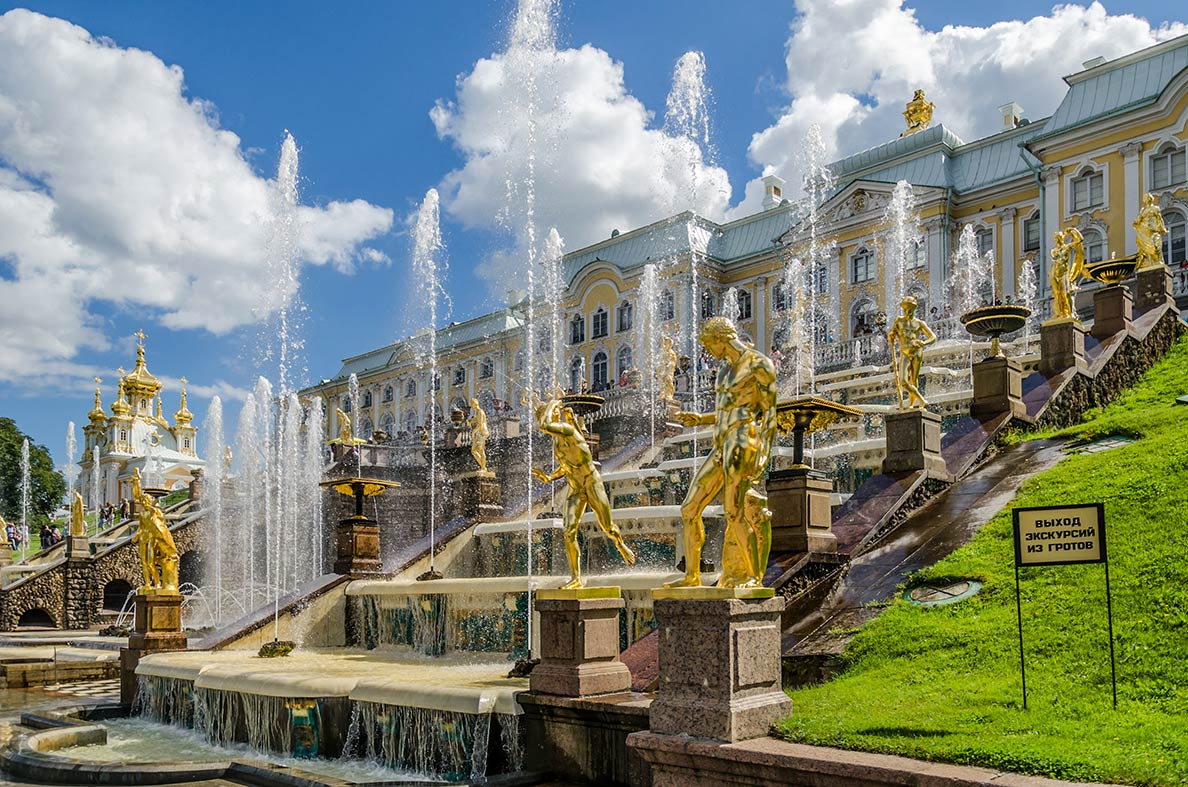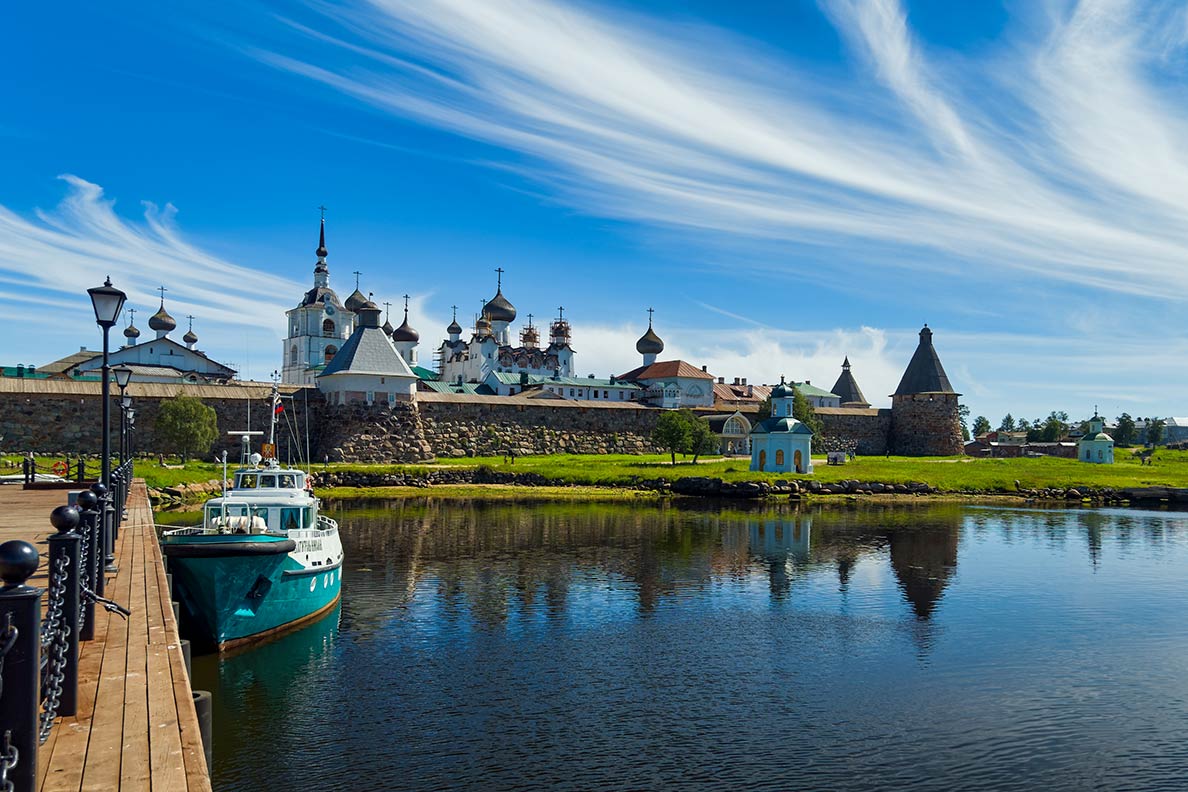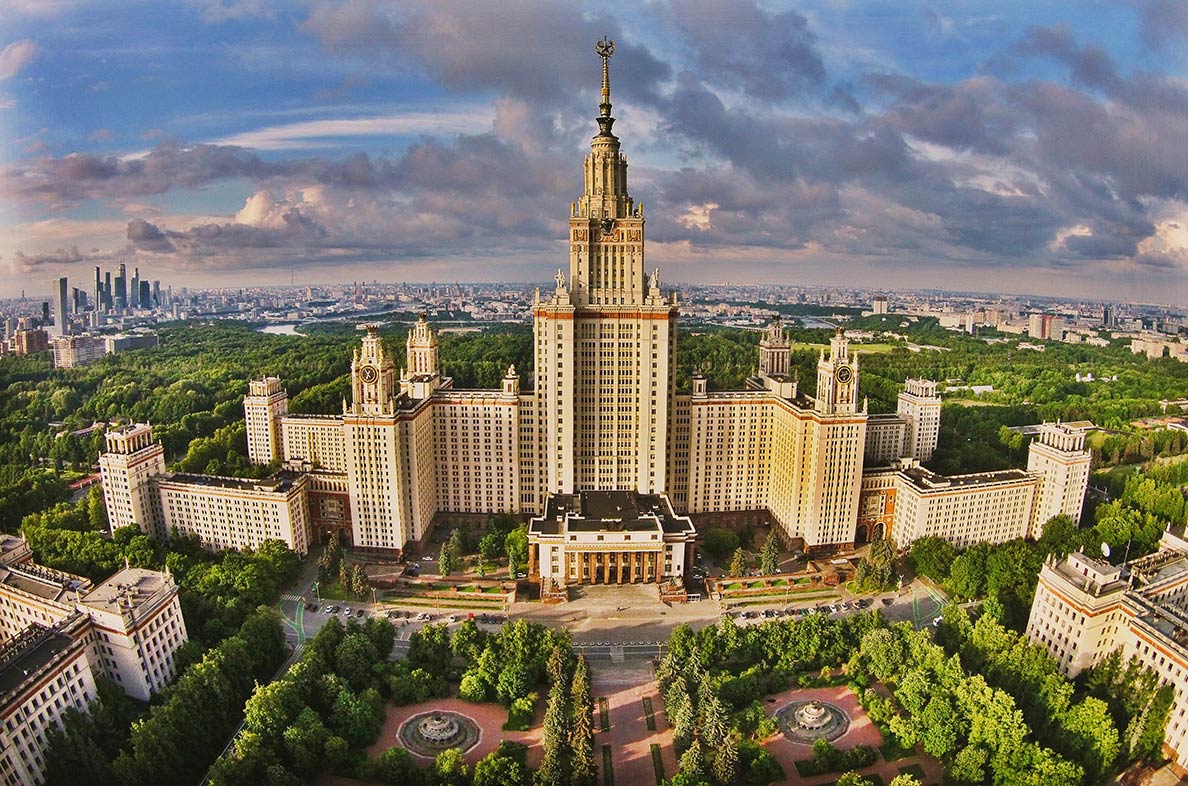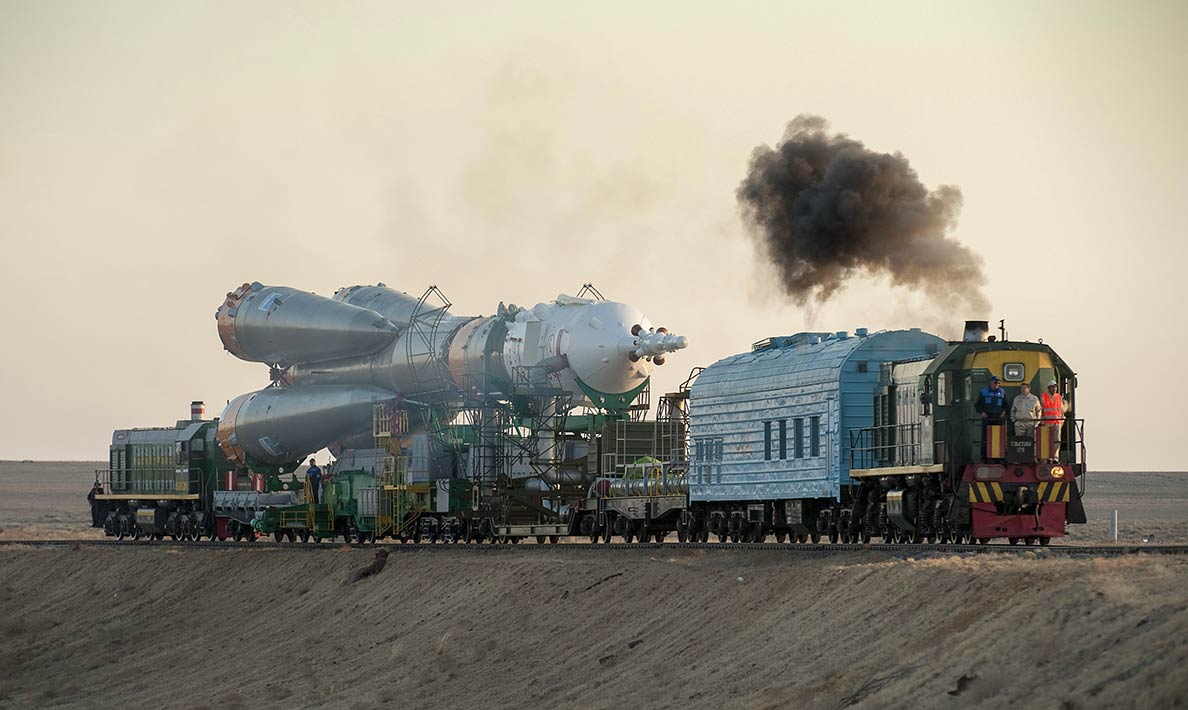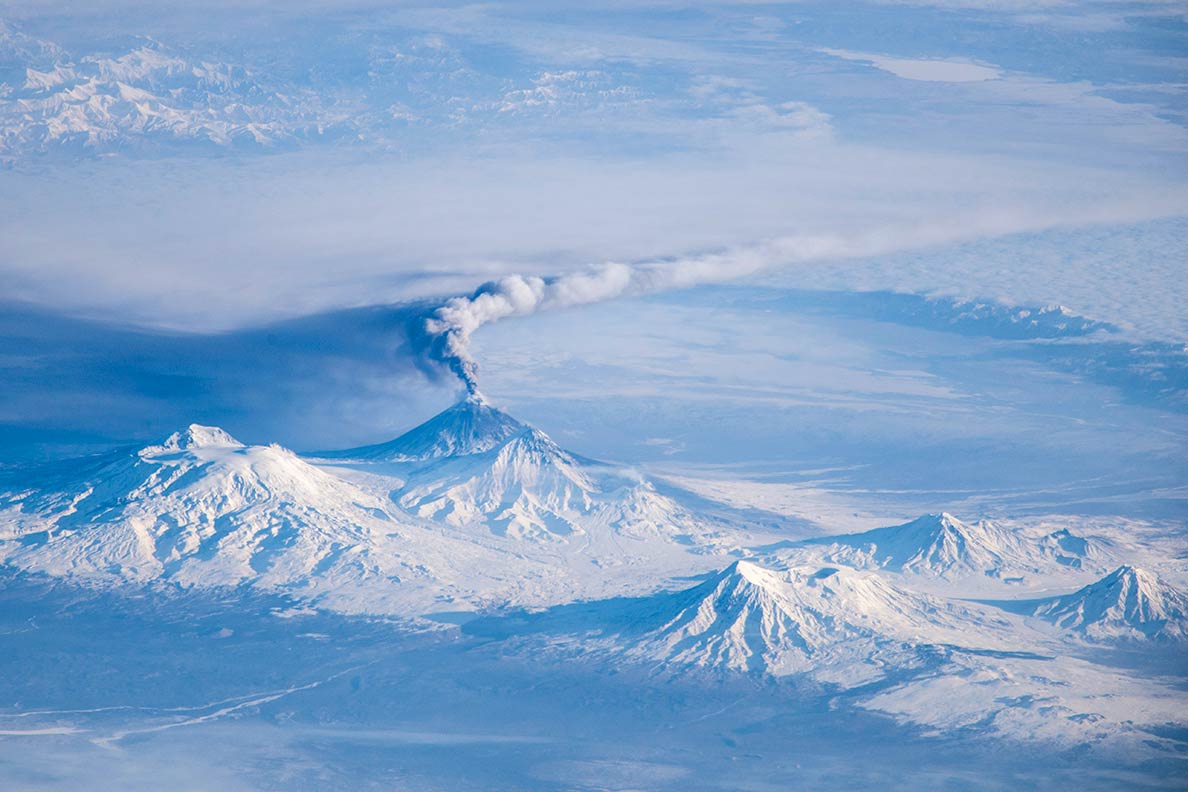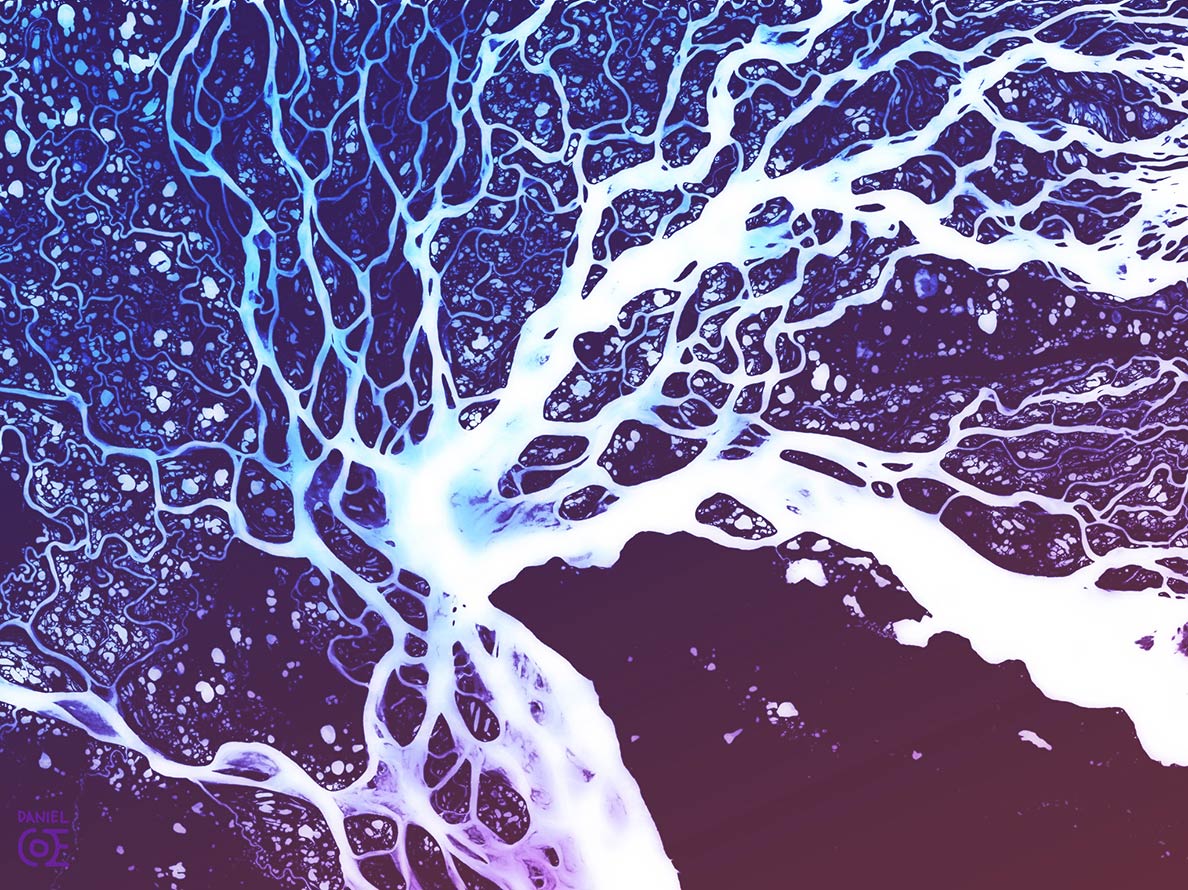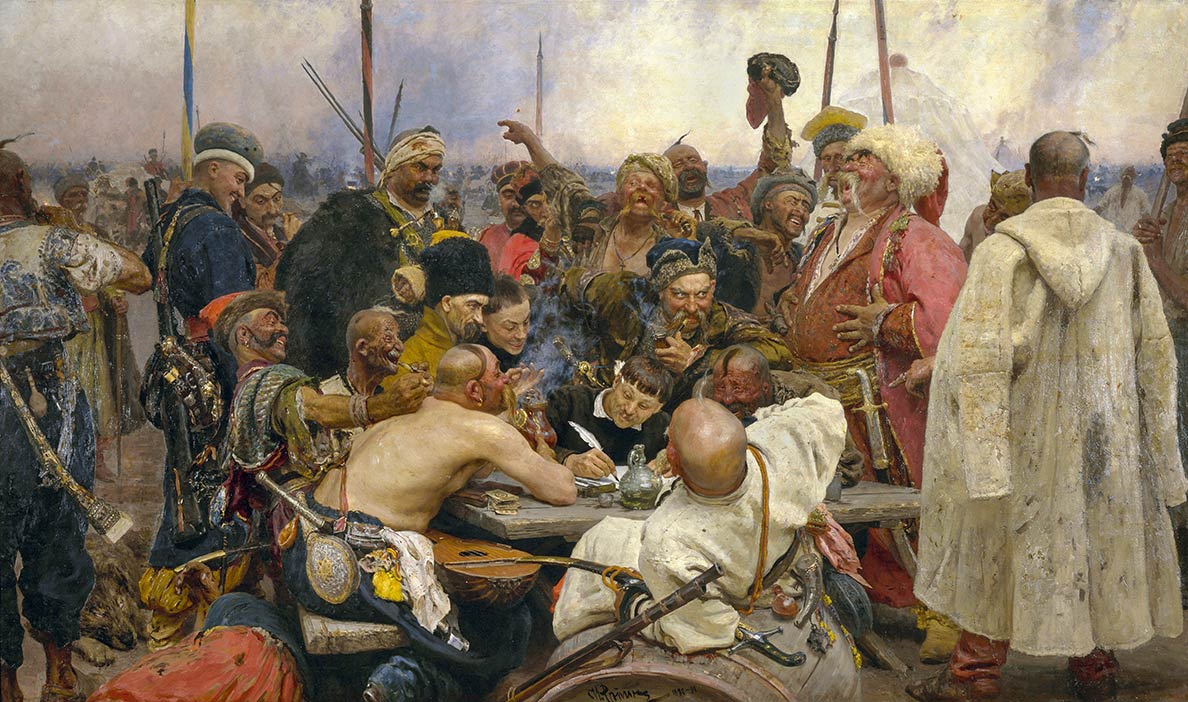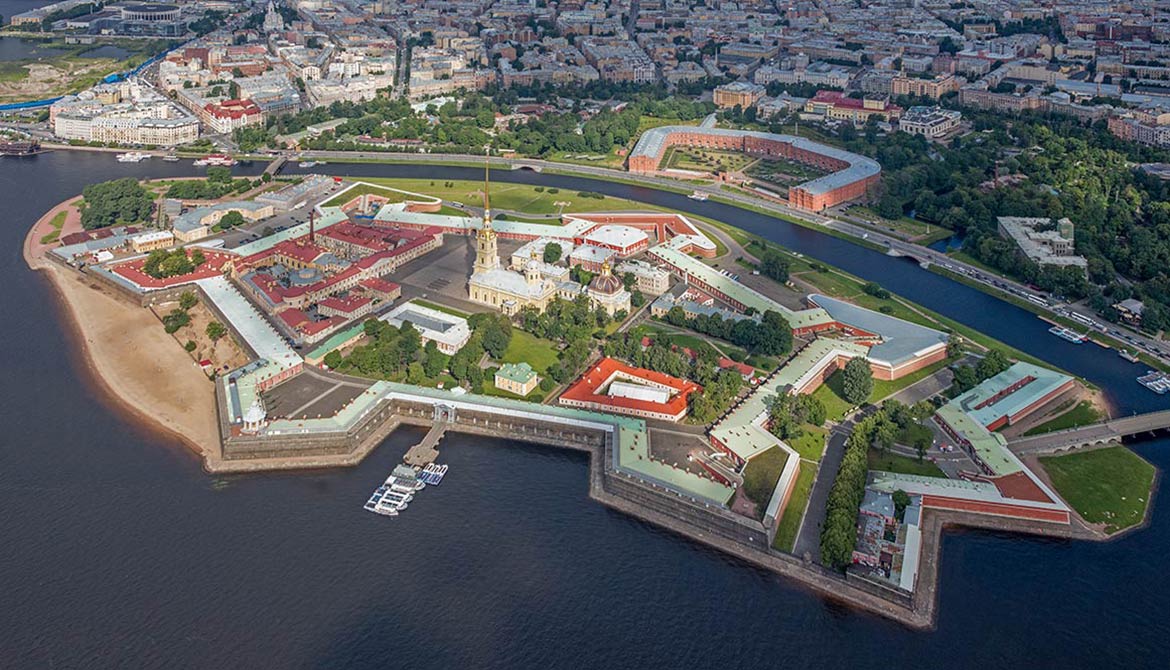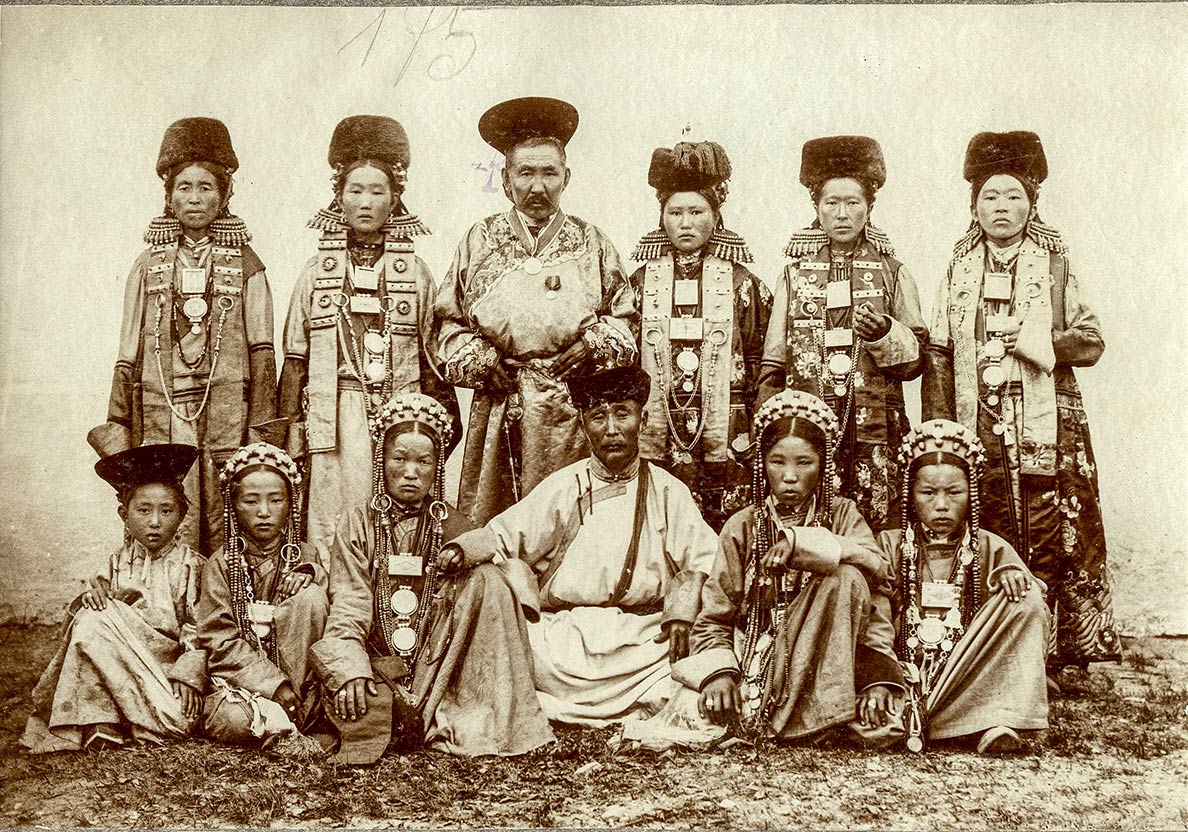What is Russia famous for?
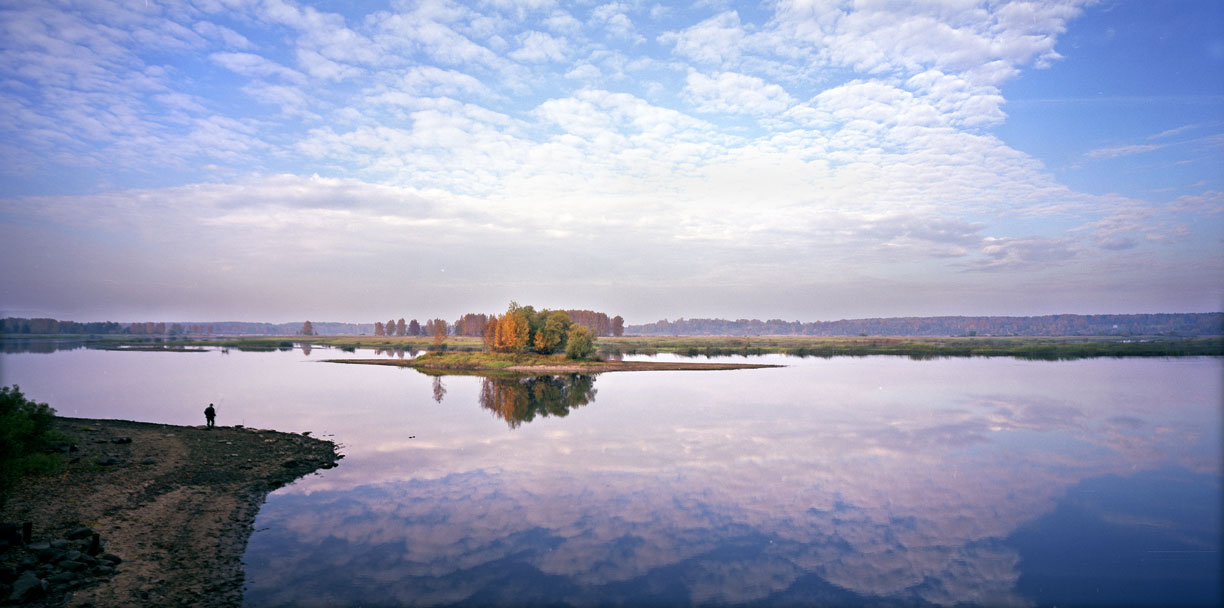 On the upper reaches of the Volga near the town of Myishkin. The Volga is the longest river in Europe with 3690 km.
Image: strokin.ru
Russian Symbols
On the upper reaches of the Volga near the town of Myishkin. The Volga is the longest river in Europe with 3690 km.
Image: strokin.ru
Russian Symbols
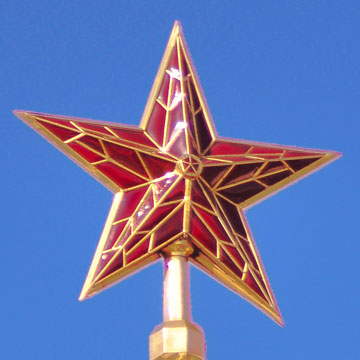 The red Kremlin star.
The red Kremlin star.
The five-pointed filled
red star is a symbol often associated with communist ideology. The
hammer (workers)
and sickle (peasants) and a red star were the symbols on the red flag of the Soviet Union (1955–1991).
The pentagonal red
Kremlin stars replaced the gilded eagles on Moscow's Kremlin towers that had symbolized Imperial Russia. Today the
double-headed eagle can be seen again on the state seal of the Russian Federation; it is modeled after the medieval original.
The
Russian bear (Russian: Русский медведь, romanized: Russky medved). The Eurasian brown bear is the national animal of Russia. The bear was a widely used symbol for Russia, dating back to the 16th century. The bear was especially often used in political cartoons by the West and other countries as a symbol for Russia, and not always in a flattering context.
Geography
Russia is the
largest country in the world, bordering 14 nations and two breakaway states (Abkhazia and South Ossetia). The vast country stretches across the northern part of Eurasia and is divided by the Ural Mountains into European Russia (west) and Siberia in Asia (east). Russia would be even bigger if it had not sold Alaska.
The
Ural mountain range forms the (conventional) boundary between Europe and Asia.
Siberia, the vast region east of the Urals is known for its Gulag camps, Permafrost and the
Trans-Siberian Railway.
The Russian
Volga is the longest river in Europe with 3690 km.
Lake Ladoga near St. Petersburg is the largest lake located entirely in Europe. The lake is the largest freshwater lake in Europe and Asia and the deepest lake in the world (1,743 m).
Mount Elbrus is the highest mountain in Russia (and Europe) at 5,642 meters.
The
Kamchatka Peninsula and the neighboring
Kuril Islands are part of the Circum-Pacific Belt, also known as the
Pacific Ring of Fire, an area of active volcanoes, geysers, hot springs, earthquakes and tsunamis.
Architecture
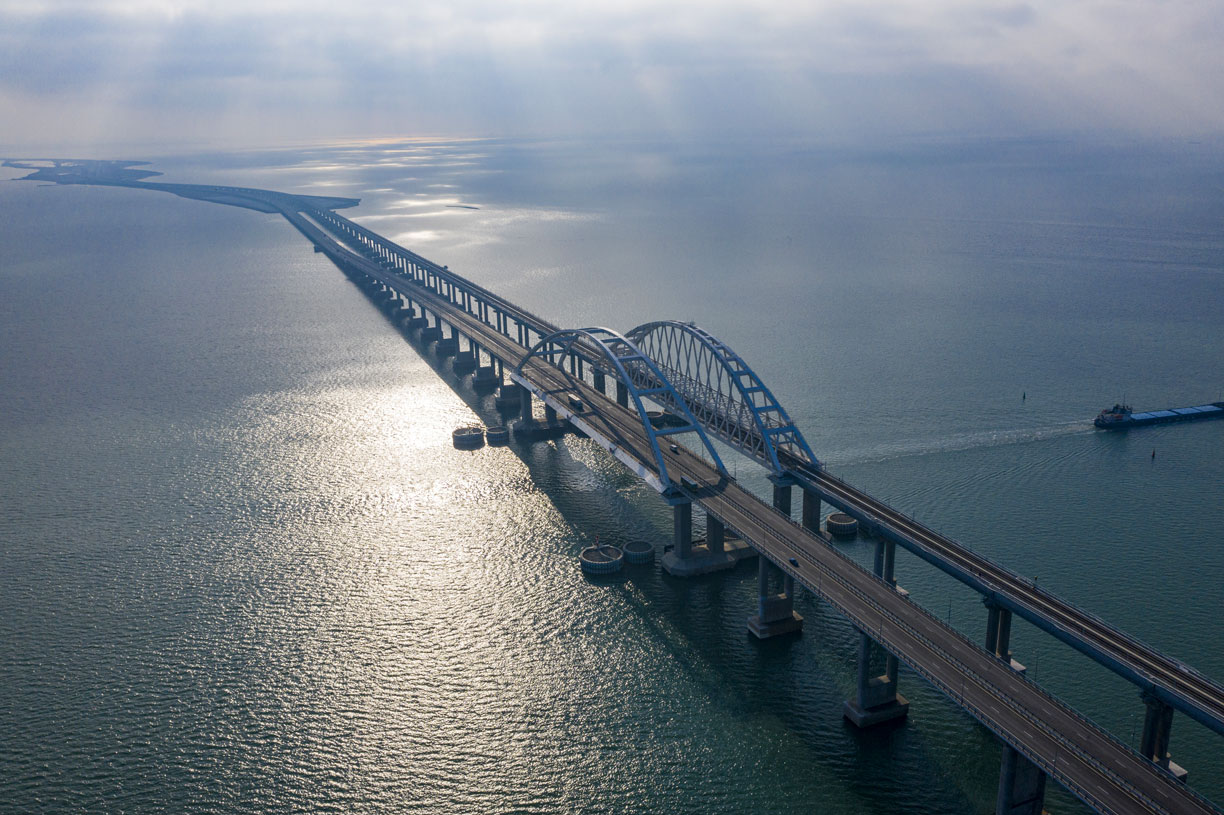 The Crimean bridge connects mainland Russia with the Crimean Peninsula.
Image: Rosavtodor
The Crimean bridge connects mainland Russia with the Crimean Peninsula.
Image: Rosavtodor
The
onion-shaped domes of Eastern Orthodox churches such as Saint Basil's Cathedral (1482–95) in Moscow.
Stalinist style skyscrapers, such as Moscow's Seven Sisters.
Kremlins, Russian citadels, the most famous is the Kremlin in Moscow, within its tower studded walls are five palaces, and four cathedrals.
The
Crimean Bridge is the longest bridge in Russia and in Europe. The 19 km (12 mi) long bridge spans the Kerch Strait between the Russian mainland and Russian occupied Crimean Peninsula. Planning for the bridge began in 2014, shortly after the Russian annexation of Crimea.
Russian Culture
Hermitage museum of art and culture in Saint Petersburg is the largest art museum in the world by gallery space. In 1764,
Empress Catherine the Great purchased a series of paintings from the Berlin merchant Johann Ernst Gotzkowsky. These works of art formed the basis and the beginning of the Hermitage Museum collection.
Ballet at the Bolshoi Theatre, the Bolshoi Ballet was an internationally renowned classical ballet company based at the Bolshoi Theatre in Moscow - until Russia's invasion of Ukraine when many of its talents left the company. Putin has ensured that the country's leading ballet companies have lost their talents.
[Washington Post]
Moscow State Circus - The name Moscow State Circus is used for a variety of circuses. The Russian Circus experienced its heyday during the Soviet era, when acts from many Russian circuses joined together to tour the world under the title "The Moscow Circus."
[WP]
Amber Room - The Amber Room in the
Catherine Palace, the summer residence of the Russian tsars near Saint Petersburg, was a chamber decorated in amber panels backed with gold leaf and mirrors. The room was built in Prussia in the 18th century; it was dismantled and finally disappeared during the Second World War.
[WP]
Other symbols for Russian culture are the
Samovar (a richly decorated tea boiler), the
Balalaika (a Russian string instrument),
Matryoshka dolls (hollow wooden dolls, designed to nest inside one another)
Russian staple food
Borscht, Shchi, and Solyanka, Blini, Beef Stroganoff, Bublik, Pelmeni, Shashlik, Kaviar and Vodka; Tea from a Samovar.
Russian Arts
Russian Literature
Bulgakov, Chekhov, Dostoevsky, Gogol, Gorky, Nabokov, Pasternak, Pushkin, Solzhenitsyn, Tolstoy, Turgenev.
Russian Painters
Chagall, Naum Gabo, Kandinsky, Malevich, Popova, Ilya Repin, Rodchenko, Valentin Serov, Pavel Tchelitchew.
Infamous Russia
Despite its art, culture and achievements, Russia has been in a geopolitical struggle with the West not only since the end of the Romanov dynasty. However, the Russian leadership lacks the territorial, economic and soft power of its adversary and must instead resort to covert and unconventional tactics to compensate for this deficit. The Kremlin has refined the use of these tools over time and these attacks have intensified in scale and complexity across Europe.
For years, Vladimir Putin's government has engaged in a relentless assault to undermine democracy and the rule of law in Europe and the United States. Putin's Kremlin employs an asymmetric arsenal that includes military invasions, cyberattacks, disinformation, support for fringe
political groups, and the weaponization of energy resources, organized crime, and corruption.
[US Senate Prints] [NTI] [LSE]

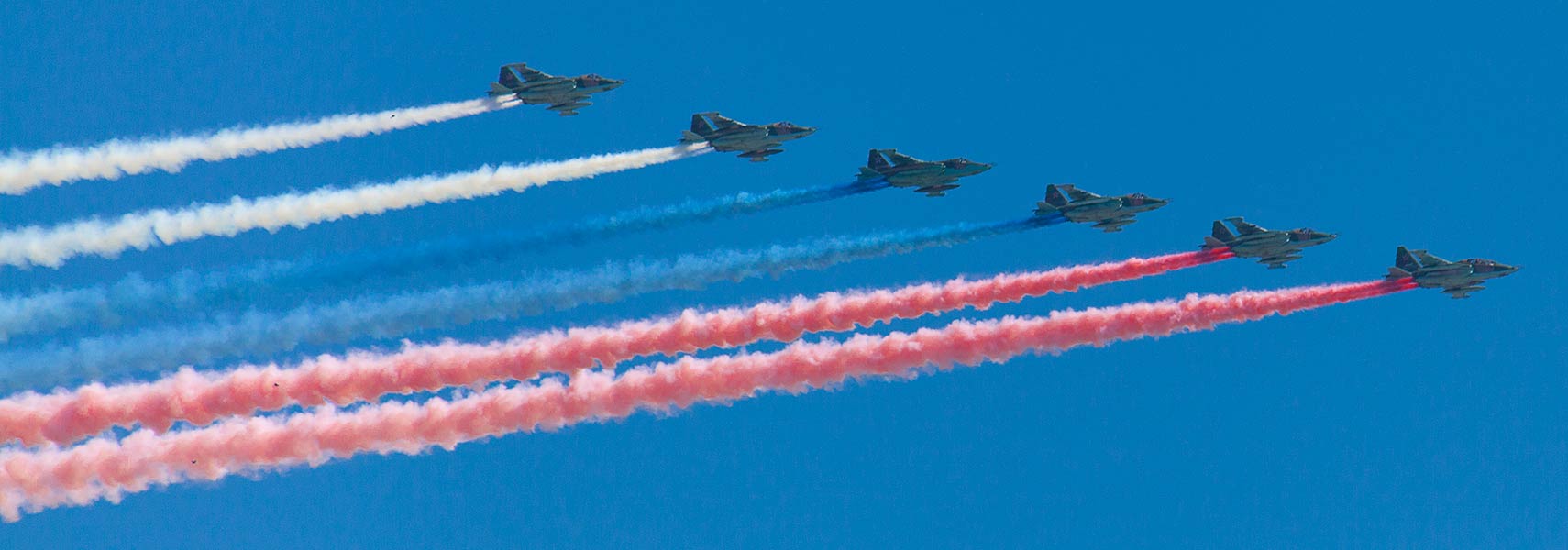
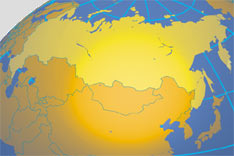

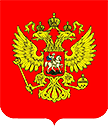
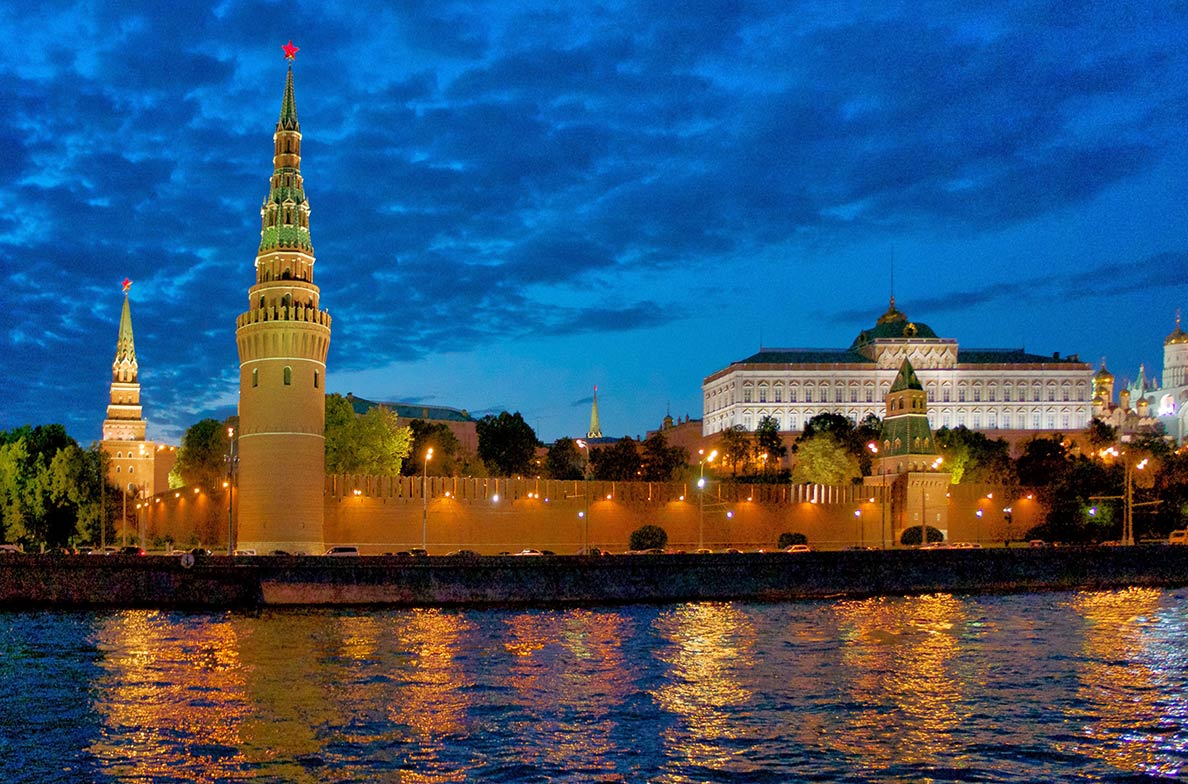
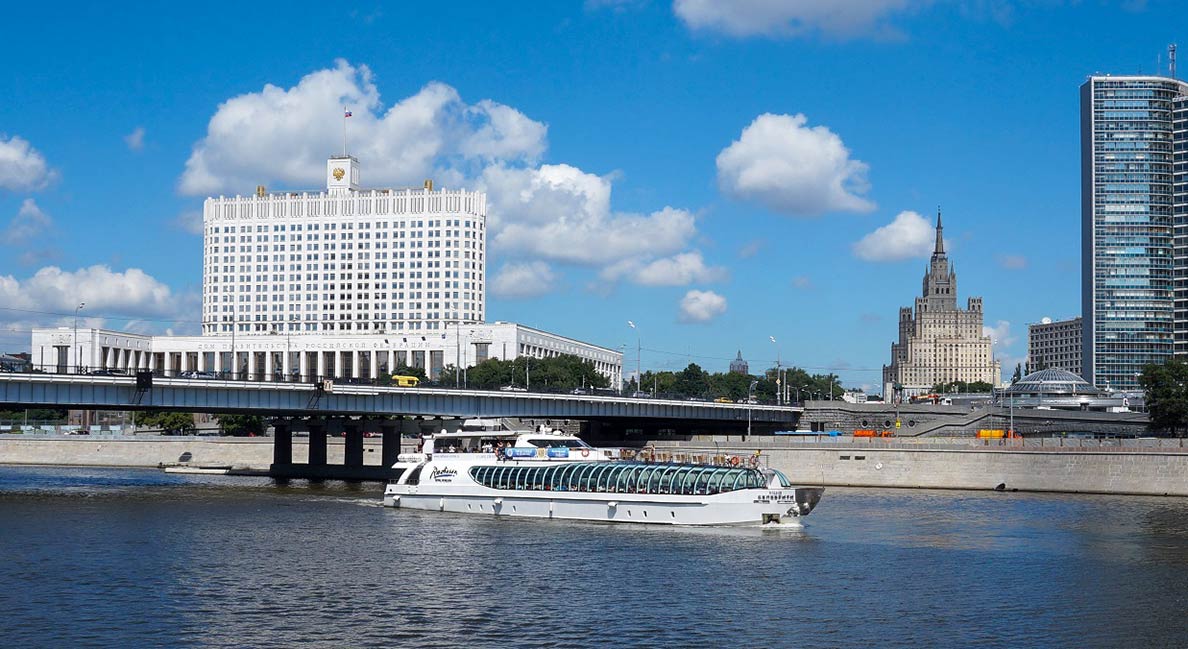
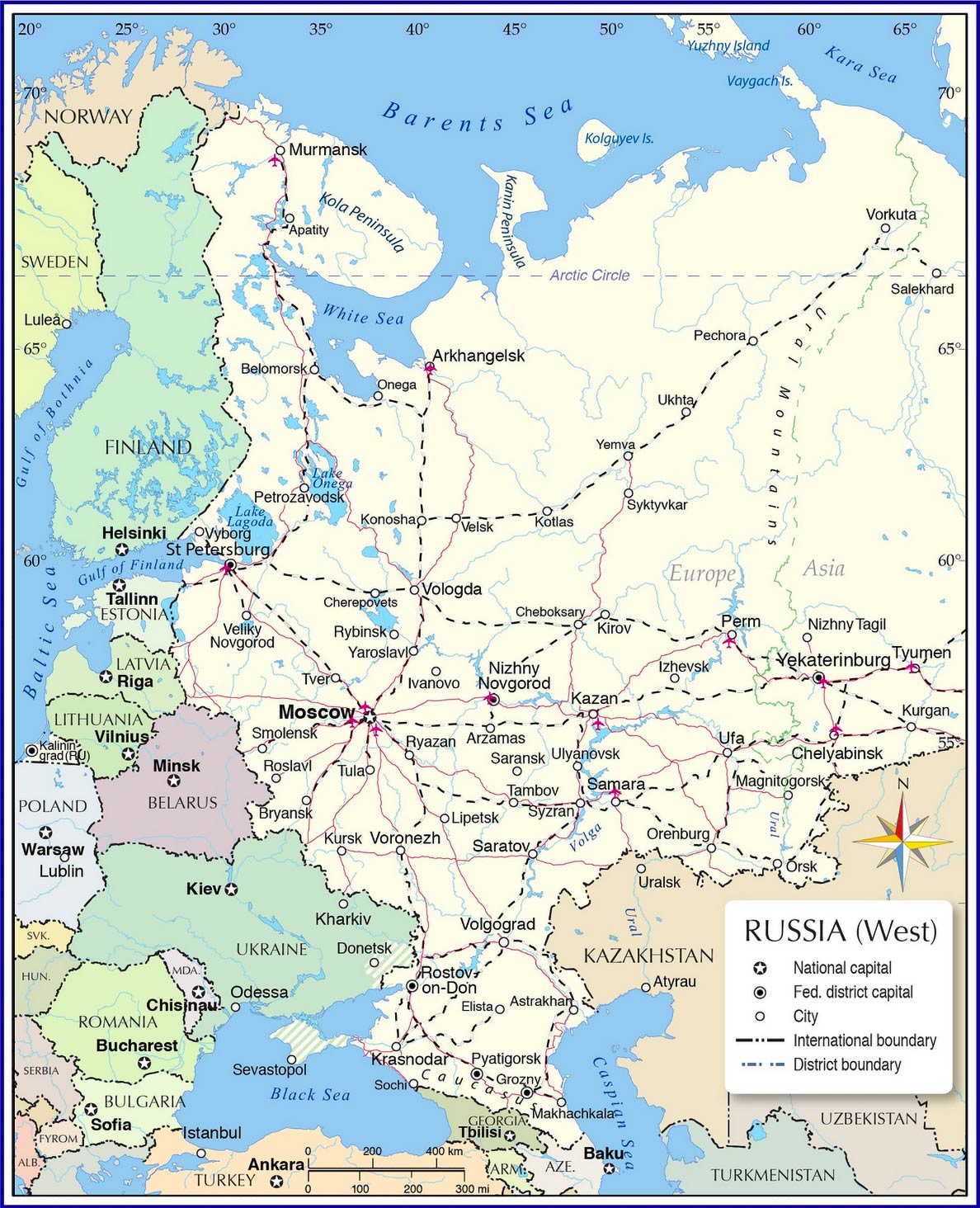
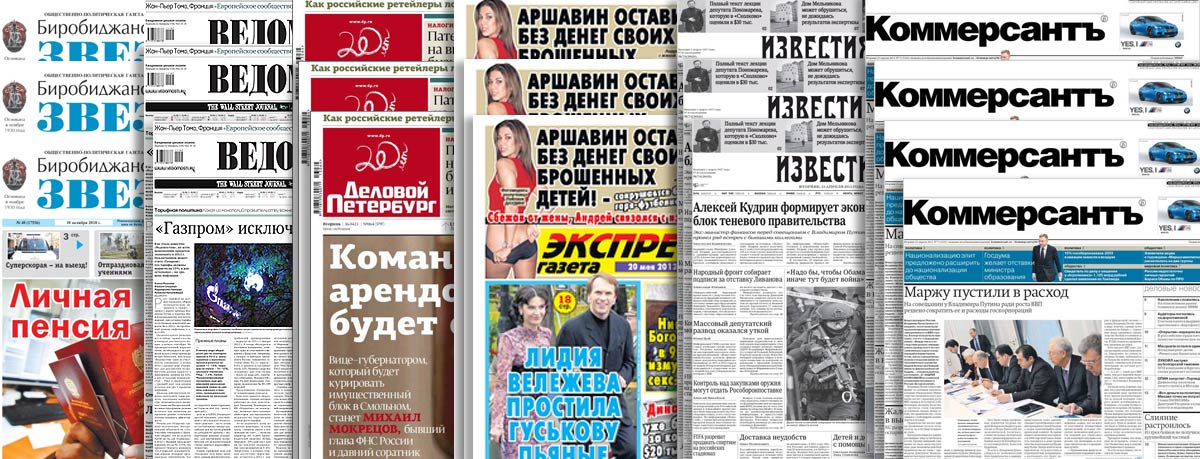
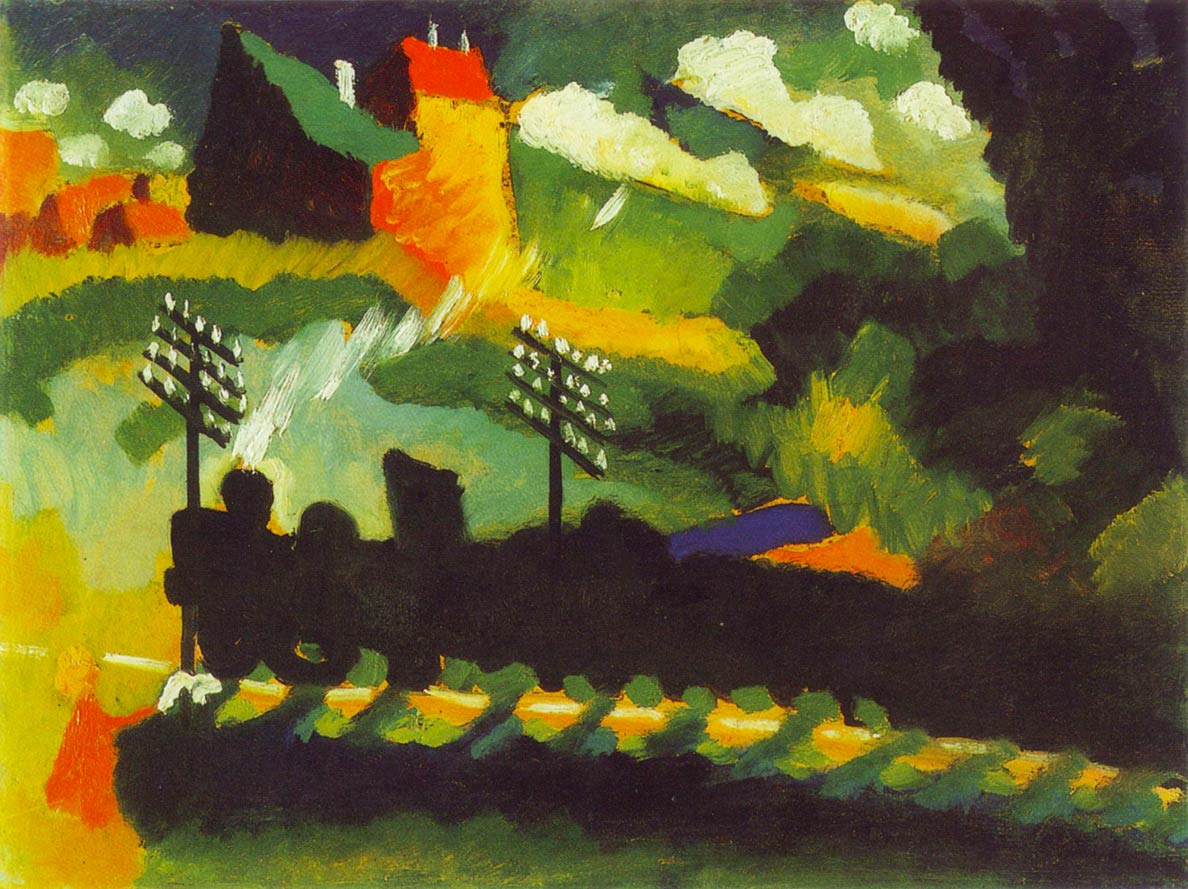
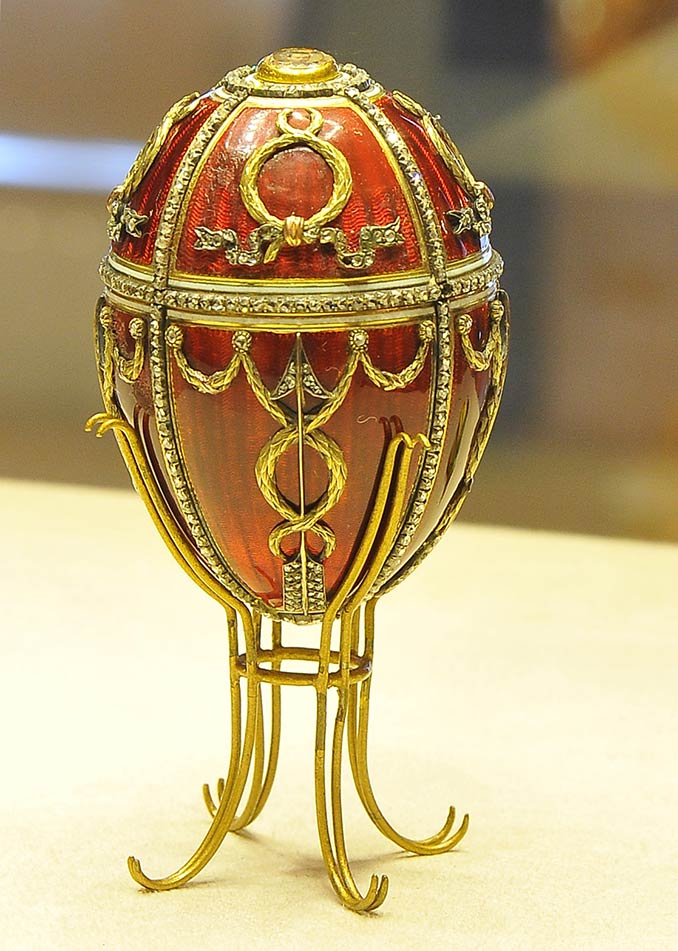
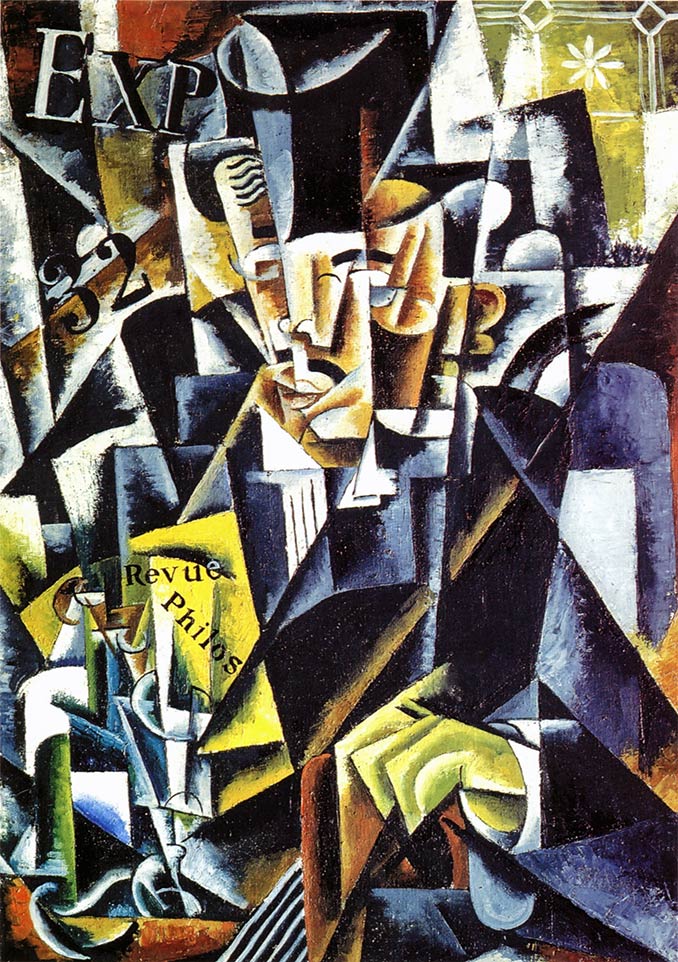
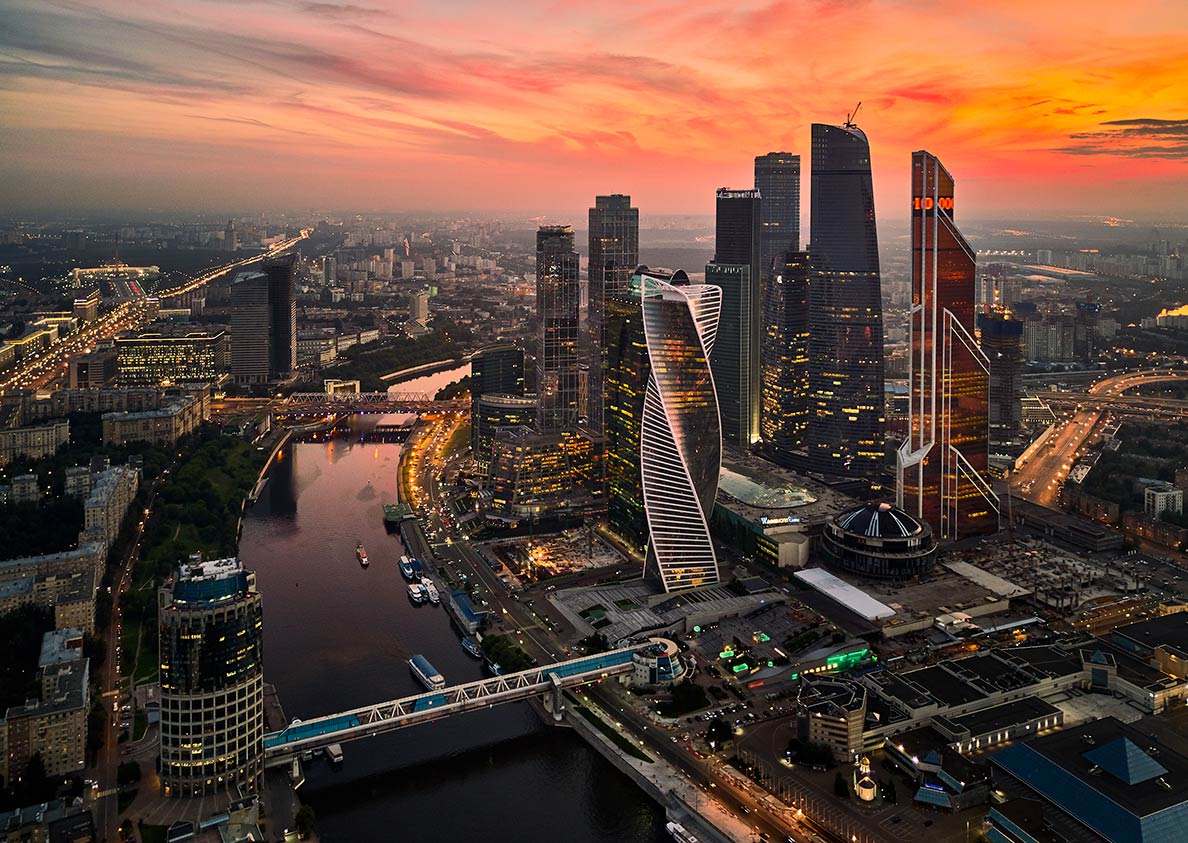
 list
list